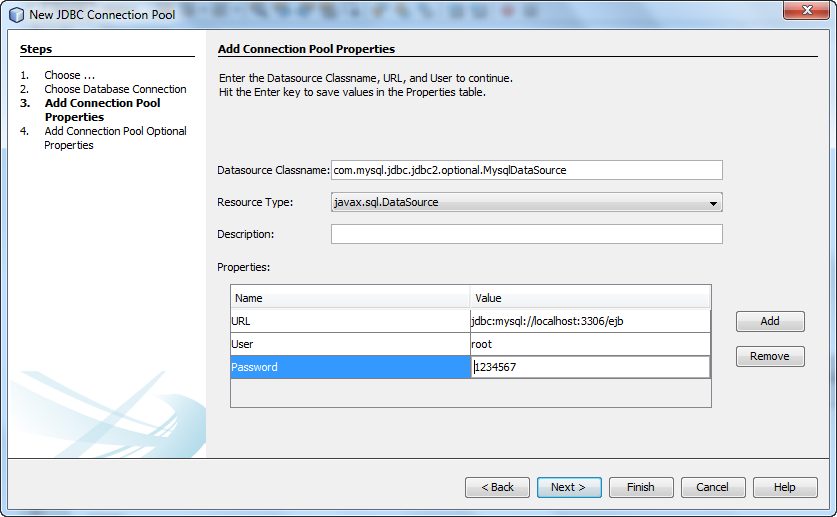


Now, you can deploy your Java application to the created Jelastic PaaS environment and enjoy the benefits of GlassFish and Payara connection pooling! URL and Url - sets a JDBC connection string in the jdbc:mysql:// placeholder with the your JNDI name from the previous section (i.e.

Glassfish mysql password#
Password - stores a password for the specified user.DatabaseName - provides your database name ( pooling in our case).ServerName - specifies your database host without the protocol (e.g.User - provides your database login ( pooling in our case).Find and modify the following Additional Properties:
Glassfish mysql driver#
Database Driver Vendor - choose the MySQL optionĤ.Resource Type - select the item from the drop-down list.Within the appeared form, fill in the following fields: Navigate to the Resources > JDBC > JDBC Connection Pools section and click the New button on the tools panel. Login to the GlassFish (or Payara) Admin panel, using credentials from the appropriate email.ģ. The JDBC MySQL connector is provided by default with the stack (located in the /opt/glassfish/glassfish/domains/domain1/lib directory on your GlassFish server or /opt/payara/glassfish/domains/domain1/lib on Payara), so you don’t need to upload one manually.Ģ. Choice of Database MySQL, PostgreSQL or Oracle-10g Instant Installation One-line JBoss server installation on your choice of Linux Distro Logging Default Jboss logging factory/log4j or your own application logging module. Within the opened form, specify all of the required data and tick the Create database with the same name and grant all privileges option.Ĭlick Go at the bottom of the page to initiate the addition of a database and user for connection pooling. GlassFish v2, v3, v4 Java Features JSP, Servets, Struts, Hibernate, Spring, EJB3, JSF, Eclipse. Once inside, switch to the User accounts tab and click on the Add user account link. Use the received email with database credentials to login into the opened phpMyAdmin panel.Ģ. Click the Open in browser button for your MySQL node. Next, set the resource limits for your containers and type any preferred environment name.Ĭlick Create, wait for a few minutes to get your new environment and proceed to create JDBC connection pool.

In the topology wizard, switch to the Java tab, pick GlassFish or Payara as your application server and add the required database (as an example, we use GlassFish and MySQL pair). Create Environmentġ.Log into your Jelastic account and click the New environment button. This strongly enhances the performance of a database, especially for requests made to dynamic database-driven applications.įollow the simple steps below to configure Java Database Connectivity for GlassFish and Payara with Jelastic PaaS. Such implementation allows reusing database connections cached in the pool.Ĭonfiguring JDBC pool connection for your application server can reduce delays and resource consumption compared to servicing each individual request. The output indicates that the MySQL driver is deployed to a location in the GlassFish server.Java application servers as GlassFish and Payara provide a native support of the JDBC connection pooling mechanism to enhance a database access. You can view progress in the IDE’s Output window (Ctrl-4 ⌘-4 on Mac). In the IDE’s Projects window, choose Deploy from the right-click menu of the project node. If you do not see the driver JAR file, perform the following step.ĭeploy your project to the server. Because you should have already deployed the IFPWAFCAD project to the server, you should see the mysql-connector-java-5.1.6-bin.jar file. On your computer, navigate to the GlassFish server installation directory and drill into the domains > domain1 > lib subfolder. As shown in the image above, the driver JAR file should be located within domain1, which is the default domain created upon installing the GlassFish server. Each instance runs applications in a unique domain, and the Domain Name field indicates the name of the domain your server is using. When you connect to the GlassFish server in the IDE, you are actually connecting to an instance of the application server. Before you close the Servers manager, make a note of the path indicated in the Domains folder text field.


 0 kommentar(er)
0 kommentar(er)
